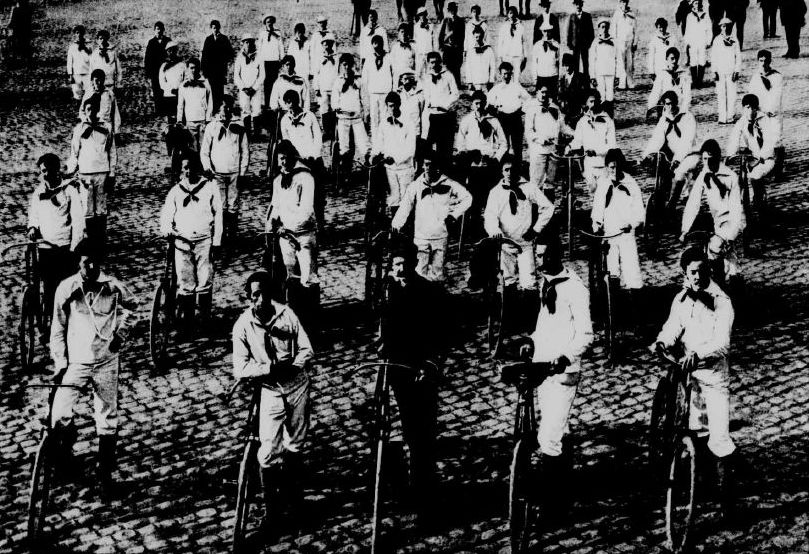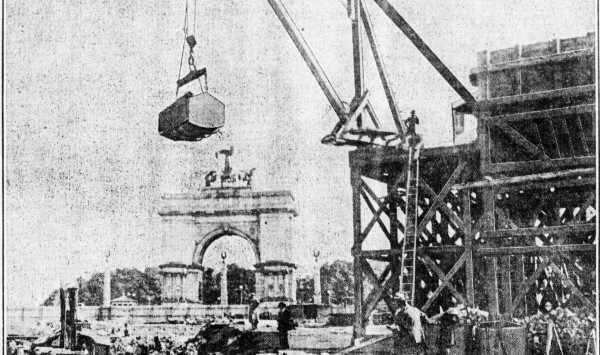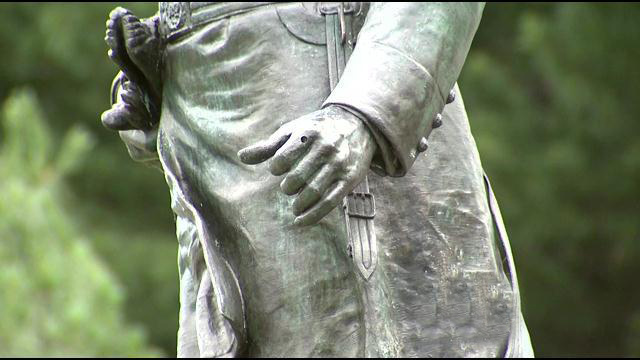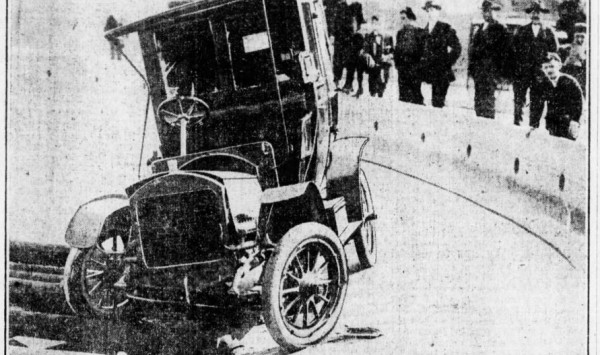THE NAVY BICYCLE SQUAD OF BROOKLYN (1897)

******************************************************************************************************************************** Brownstone Detectives investigates the history of our clients’ homes. The story you are about to read was composed from research conducted in the course of one of those investigations. Do you know the history of YOUR house? ******************************************************************************************************************************** Boy! But the Navy sure knew how to get around back in the day! These “wheelmen” – resplendent in their military uniforms – were organized not just for play, but for work. As bicycling was as much of a past time then as it is today, these men likely rode not only for their enjoyment, but to travel from station to station, as well – also representing the Navy in bicycling races. Headquartered at 56th Street in Brooklyn, the Second Naval Battalion was organized just before this picture was taken in July of 1897. It performed duty for the state during the Spanish-American war on coast signal service, guarding mine fields at Willets Point, in Queens, and on patrol duty in New York harbor aboard various vessels. From the New York Tribune of 4 July 1897, we have pictured above, “the first meet of the Bicycle Squad of the 2nd Naval Battalion at the Memorial Arch (Grand Army Plaza) in Brooklyn.” Follow @BrownstoneDetec Share ———————————————————————————————————————– The Brownstone Detectives Brownstone Detectives is an historic property research agency. Our mission is to document and save the histories of our clients’ homes. From our research, we produce our celebrated House History Books and House History Reports. Contact us today to begin discovering the history […]
SUBWAY DIGGING – GRAND ARMY PLAZA (1914)

“Dirt is beginning to fly with telling effect in the excavations for the extension of the subway through Flatbush Avenue and out Eastern parkway,” noted the Brooklyn Daily Eagle in their 30 August 1914 edition. “The Above picture shows the big steam shovel at work close to the sailors and soldiers Monument at the Plaza of Prospect Park. Which is seen in the background. This excavation of the present subway will be constructed faster than the Fourth Avenue line has been because there are neither troubles about obtaining title to abutting lands nor the physical difficulties which reset the Fulton Street section of the Fourth Avenue line.” Follow @BrownstoneDetec ———————————————————————————————————————– The Brownstone Detectives The story you have just read was composed from extensive historical research conducted by The Brownstone Detectives. Our clients commission us to investigate the history of their – or their clients’ – historic properties. From our findings, we produce their very own hardbound House History Books. Our books are professionally written and laid out, containing illustrated and colorful narratives that bring the history of any house to life. Contact us today to begin discovering the history of your home.
THE SECOND HUMILIATION OF WARREN (1960)

A number of New York City Parks Department statues are having their stolen swords replaced reported a DNAInfo story. The statues, most of which have had their their swords stolen (bayonets, and glasses, in some instances) during times of high crime, are now deemed worthy of replicas being cast. The Parks Department worries less now about the replicas being stolen themselves. I’ve often noticed one such statue in particular – the Kemble Warren statue at the Grand Army Plaza. First of all, why was it there? What had Warren, an engineer, done that could have been so critical to the war effort? Had he been a critical part of the attack at any actual battle? I figured that, as an engineer, he had – more likely – prepared a defense. But was that enough to receive a statue? KEMBLE WARREN – A HUMILIATION Gouverneur Kemble Warren, the engineer for whom the statue at the Grand Army Plaza had been cast and dedicated, had been known for his heroism at Gettysburg. By the time that General Philip Sheridan had begun his “burning of the Shenandoah Valley,” though, Warren had been castigated by, what Sheridan referred to as, a critical slowness in arriving to a certain battle. Because of this, Warren had been relived of duty by the general (an action supported by General Grant, at the time) and assigned to another, less critical, theater of battle. The humiliation of the relief of command, though, had already had its effect. After some […]
SO A TAXICAB JUMPS INTO A FOUNTAIN… (1909)

******************************************************************************************************************************** Brownstone Detectives investigates the history of our clients’ homes. The story you are about to read was composed from research conducted in the course of one of those investigations. Do you know the history of YOUR house? ******************************************************************************************************************************** When Brooklyn woke up one April morning in 1909, there in Prospect Park Plaza’s “Electric Fountain” sat a little blue taxicab. To many, the thing appeared as though it had always belonged there. Some wondered whether they’d simply not noticed it all along. But others realized that something was wrong. Something was certainly wrong. THE CASE OF THE IMPETUOUS TAXICAB It seems as though the Grand Army Plaza has always had a fountain. But back when the plaza was called Prospect Park Plaza and it encompassed a larger amount of land, that fountain was much larger and took up much more space. The fountain was then what was called an “electric fountain,” and after it was installed it would attract people by the thousands each year when the lights and the water were turned on. One year, after the winter had passed and after the water was supposed to have filled the reservoir, with the jets darting, and the lights dancing, the fountain sat silent. So, as popular as the fountain was to Brooklyn, the reporters of the city had descended upon Parks Commissioner Kennedy about it’s inactivity. And in the midst of the hubbub – came the crash. HOW IT ALL CAME ABOUT It was 11:30 on a Sunday night […]